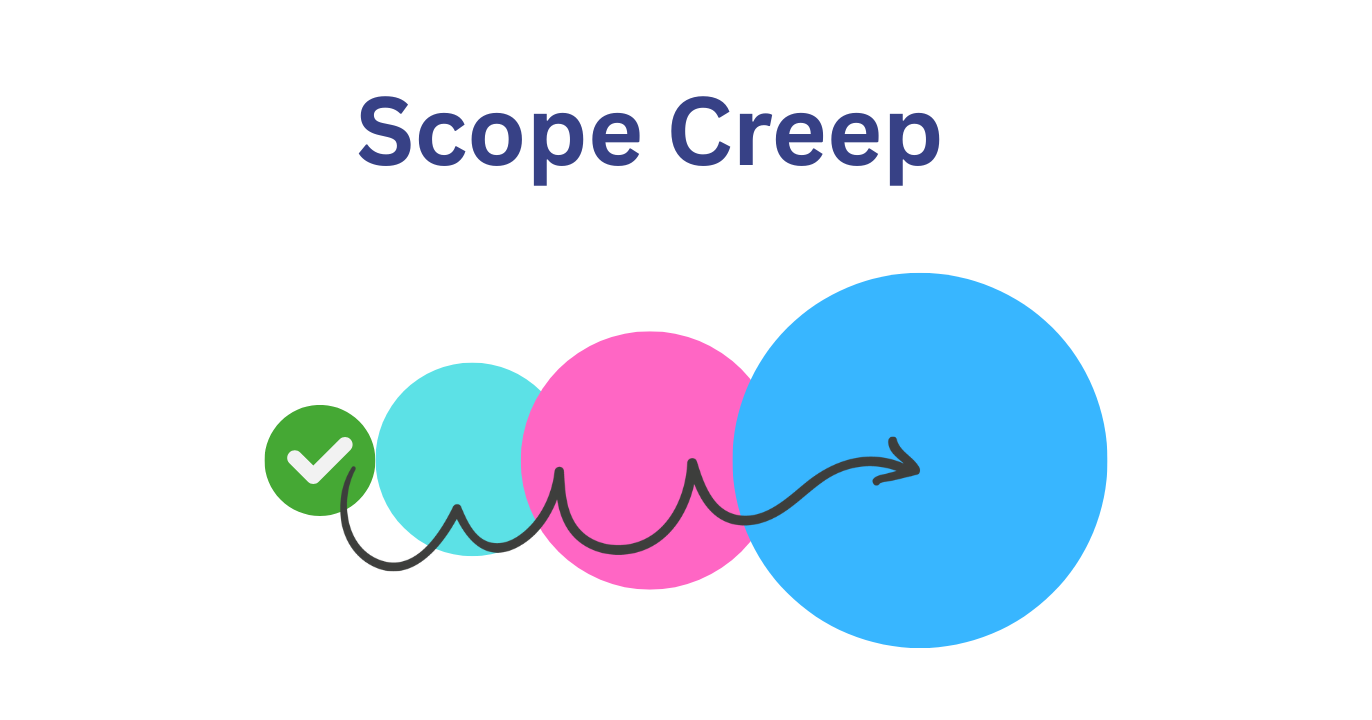Scope Creep: What It Is and How to Control It
Scope creep is the gradual expansion of a project’s scope beyond its original objectives, often without corresponding adjustments to timeline, budget, or resources. It typically happens when new features, requirements, or deliverables are added to a project after it has already begun.
Common Causes of Scope Creep:
- Poorly defined initial requirements
- Lack of proper change control processes
- Stakeholders requesting “just one more small thing”
- Misunderstanding client needs
- Team members adding features they think would be useful
- Insufficient stakeholder involvement during planning
How to Deal With Scope Creep:
Before the Project Starts
- Define clear project boundaries - Create detailed documentation of what is and isn’t included in the project scope.
- Set specific requirements - Make sure all deliverables are clearly defined and measurable.
- Get stakeholder buy-in - Ensure all key stakeholders approve the initial scope document.
During the Project
- Implement a change control process - Any scope changes should go through a formal review process that addresses impact on timeline, budget, and resources.
- Document everything - Keep records of all requested changes and approvals.
- Learn to say “no” or “not now” - Be prepared to push back on changes that would derail the project.
- Prioritize ruthlessly - If new items must be added, determine what existing items can be removed or postponed.
When Scope Changes Are Necessary
- Evaluate the impact - Assess how the change affects timeline, resources, and costs.
- Update project documentation - Revise project plans, schedules, and budget estimates.
- Communicate with stakeholders - Make sure everyone understands the implications of the changes.
- Revise agreements - Update contracts or statements of work to reflect the new scope.
Long-Term Strategies
- Break projects into smaller phases - This allows for more control and flexibility.
- Implement agile methodologies - These approaches are designed to accommodate evolving requirements.
- Conduct regular reviews - Schedule periodic check-ins to ensure the project is staying on track.
- Build in buffer time - Allow some flexibility in your schedule for inevitable changes.
Managing scope creep is a balancing act between being rigid (which can lead to an unsuitable final product) and being too accommodating (which can lead to never-ending projects). The key is to remain focused on delivering value while maintaining control over the project parameters.
This post is licensed under CC BY 4.0 by the author.
